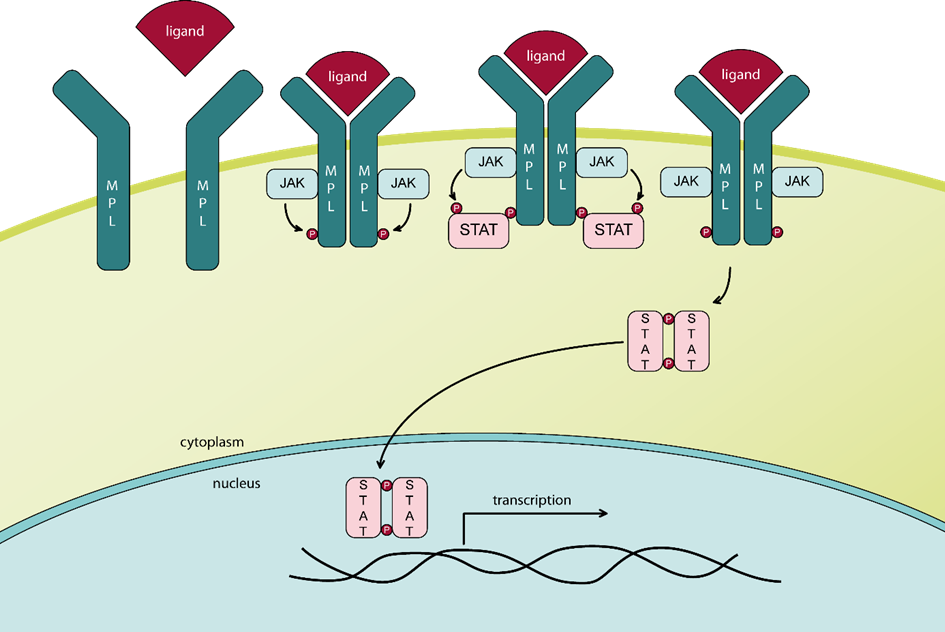Myelofibrosis and MPN
Under physiologic conditions, the bone marrow (BM) is composed of a sophisticated network of fibers and cells, which together provide the fertile soil for coordinated and demand-adapted blood cell production. Bone marrow fibrosis (myelofibrosis, MF) is a disorder in which normal BM tissue and blood-forming cells are gradually replaced by prominent coarse fibers and scar-like tissue. Over time, this eventually leads to failure of the BM to produce blood cells and translocation of blood-forming tissues to extramedullary, ontogenetically early hematopoietic organs such as spleen and liver. Together, this results in hematopoietic insufficiency, (hepato-)splenomegaly, and impaired survival. Polycythemia vera (PV), essential thrombocythemia (ET), and primary myelofibrosis (PMF) constitute the classical Bcr-Abl-negative myeloproliferative neoplasms (MPN) and chronic myeloid leukemia (CML) represents the unique Bcr-Abl MPN, all of which are clonal disorders of hematopoiesis, arising in the hematopoietic stem cell (HSC) compartment.

Almost all patients with BCR-ABL negative MPN harbor typical “driver” mutations in genes that either directly or indirectly activate JAK–STAT signaling. These mutations are located in the genes JAK2 (PV, ET, PMF), calreticulin (ET, PMF), or MPL (ET, PMF). 60% of patients with PMF harbor the JAK2V617F mutation, approximately 30% carry a calreticulin mutation (CALR), and 8% carry a myeloproliferative leukemia virus oncogene (MPL) mutation. Additional gene mutations (e.g. ASXL1, EZH2, IDH1, IDH2, SRSF2) are frequent. PMF is the least common of the three classic Bcr-Abl negative MPN; however, it is the most aggressive and is associated with a significantly increased morbidity and shortened survival. PMF is characterized by malignant clonal hematopoiesis, bone marrow fibrosis, extramedullary hematopoiesis, splenomegaly, and abnormal cytokine expression, leading to significant systemic symptoms and an elevated risk of thrombosis, severe bleeding, and transformation to acute leukemia.
CML is characterized by the presence of the BCR-ABL oncogene, which directly transforms hematopoietic stem and progenitor cells, enhancing their granulopoietic potential, proliferation, and survival. CML patients exhibit constitutional symptoms, splenomegaly, neutrophilia and leukocytosis, and, without treatment, their survival is dismal. Fortunately, most patients can be successfully treated with BCR-ABL inhibitors and achieve molecular remission. However, several factors, including BM fibrosis, can impede a favorable treatment response, putting these CML patients at risk for progression to acute leukemia, which carries a poor prognosis.


